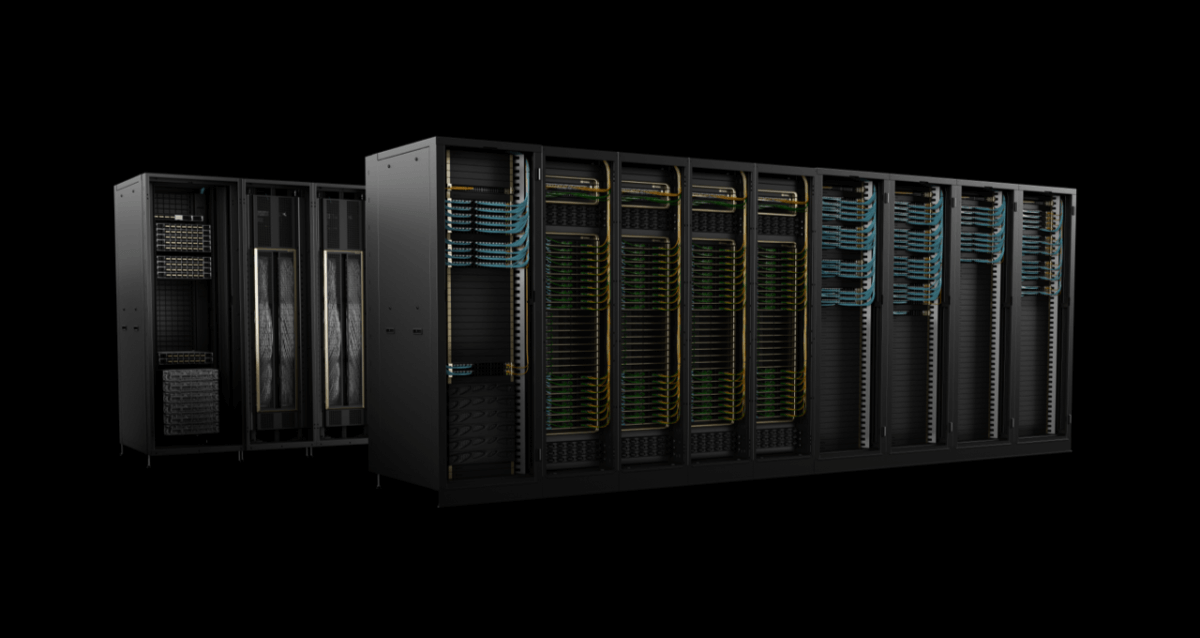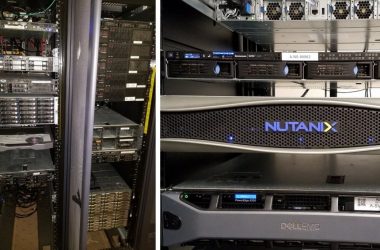

The NVIDIA GB200 Grace Blackwell Superchips, a pair that work together to process AI models with billions of parameters with unmatched efficiency, are the brains of the NVIDIA DGX SuperPOD. This next-generation AI supercomputer has a unique liquid-cooled rack-scale architecture that would maximize sustainability and performance in addition to raw power. Every component of the DGX SuperPOD ecosystem is a powerhouse. The DGX GB200 systems, for example, provide 11.5 exaflops of AI supercomputing power at FP4 accuracy, in addition to a powerful 240 terabytes of fast memory, which can be increased even further with the addition of more racks.
Delving deeper into the technological marvels of the DGX GB200 system, one discovers that it houses 36 NVIDIA GB200 Superchips, which include 36 NVIDIA Grace CPUs and 72 NVIDIA Blackwell GPUs. These components are interlinked through the fifth-generation NVIDIA NVLink, creating a unified supercomputing entity. The GB200 Superchips would be a game-changer, delivering performance up to 30 times faster than their predecessors, the NVIDIA H100 Tensor Core GPUs, particularly for large language model inference tasks.
“NVIDIA DGX AI supercomputers are the factories of the AI industrial revolution,” said Jensen Huang, founder and CEO of NVIDIA. “The new DGX SuperPOD combines the latest advancements in NVIDIA accelerated computing, networking and software to enable every company, industry and country to refine and generate their own AI.”
DGX B200 System
When it comes to scalability, the DGX SuperPOD delivers. Configurations may include tens of thousands of GB200 Superchips and begin with eight or more DGX GB200 systems. This scalability is facilitated by NVIDIA’s Quantum InfiniBand technology, ensuring a seamless connection among the Superchips. Furthermore, the architecture’s unified compute fabric, enhanced by NVIDIA BlueField-3 DPUs and the forthcoming NVIDIA Quantum-X800 InfiniBand networking, ensures every GPU benefits from up to 1,800 gigabytes per second of bandwidth.
NVIDIA has more in mind for the DGX SuperPOD than just hardware. The cutting-edge software in conjunction with the system’s turnkey architecture ensures unheard-of uptime. In order to monitor and optimize system performance, it incorporates high-performance storage solutions and has sophisticated predictive-management capabilities. This method would not only increase productivity but also cut down on the possibility of downtime, so generative AI tasks may continue uninterrupted.
Furthermore, NVIDIA unveiled the DGX B200 system, an AI supercomputing platform that runs on air cooling and is the sixth iteration of the company’s classic rack-mounted designs. With eight NVIDIA Blackwell GPUs and two 5th Gen Intel Xeon CPUs supporting it, this system would offer a significant improvement in AI performance, providing up to 144 petaflops of computational power.
As NVIDIA continues to push the boundaries of AI supercomputing, the DGX SuperPOD and DGX B200 systems stand as pillars of innovation, driving the AI industrial revolution forward. With these technical advancements, NVIDIA not only maintains its position as a pioneer in the AI area but also establishes new standards for what is feasible in AI-driven sectors, influencing AI research and application going forward.











